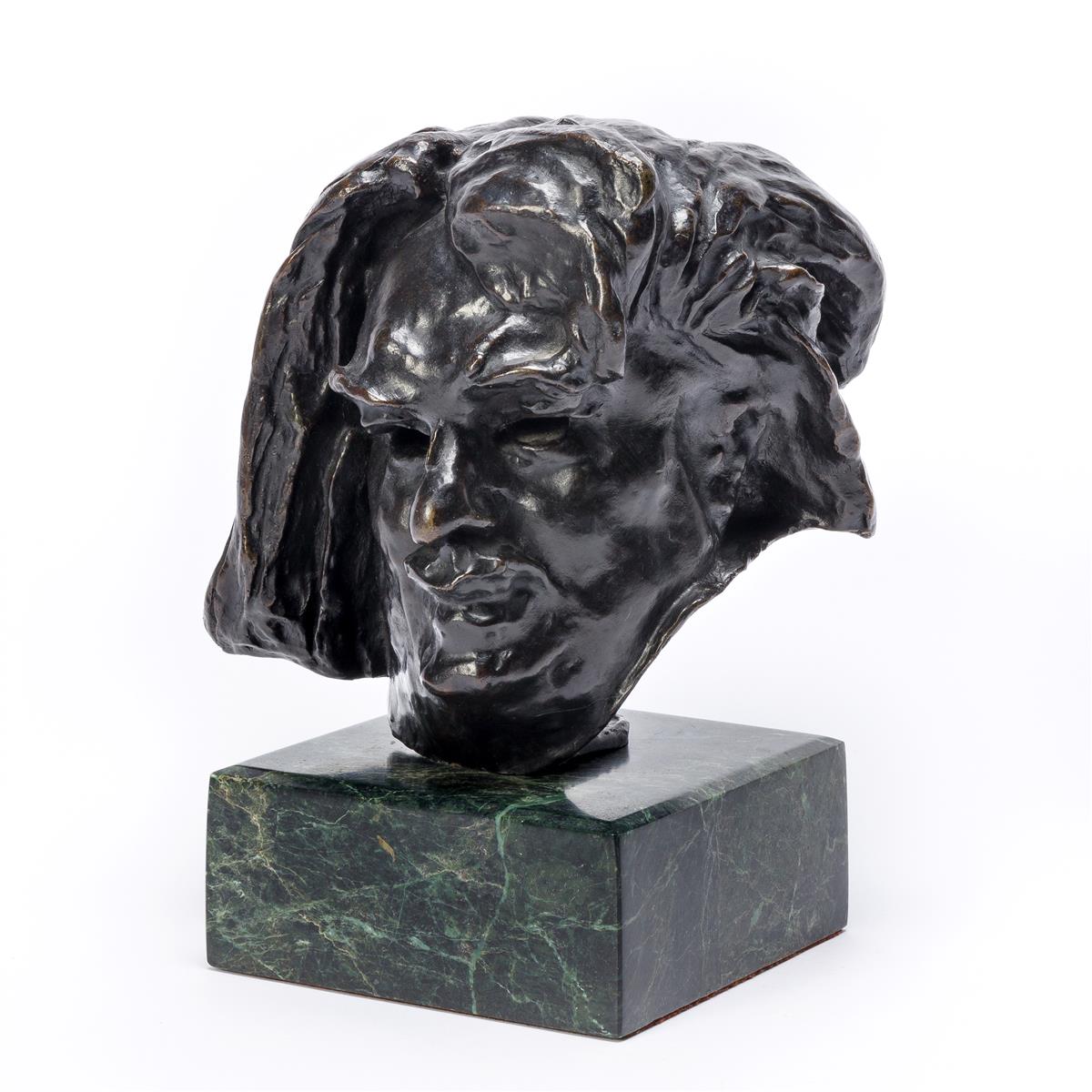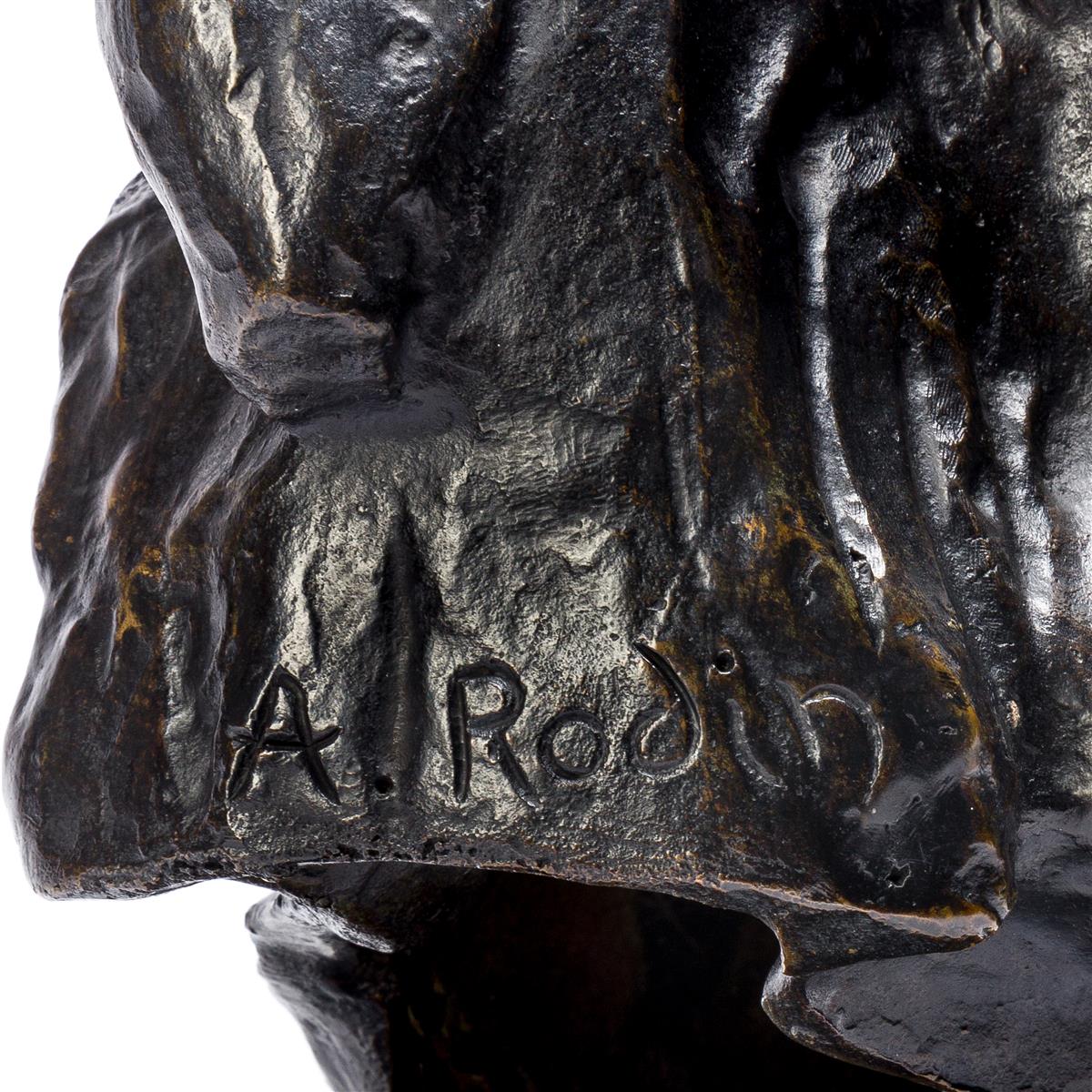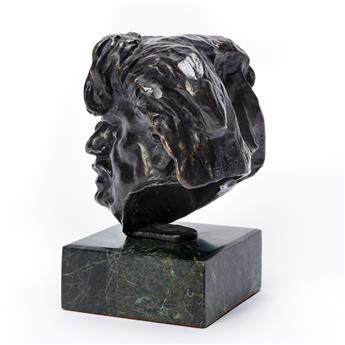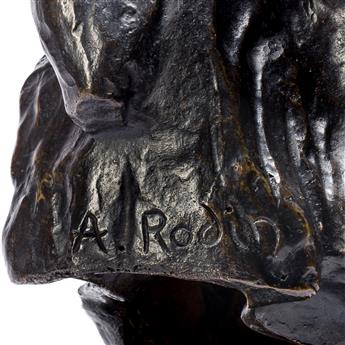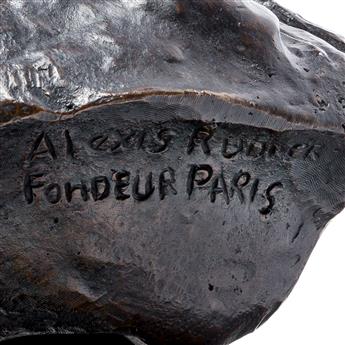Sale 2630 - Lot 73
Price Realized: $ 7,500
Price Realized: $ 9,375
?Final Price Realized includes Buyer’s Premium added to Hammer Price
Estimate: $ 10,000 - $ 15,000
AUGUSTE RODIN
Tête de Balzac (dernier état, version au col coupé derrière l'oreille).
Bronze, circa 1897 (cast later). 175 mm; 6 3/4 inches (height, excluding marble base). With the artist's signature, verso. Cast by Alexis Rudier, Paris with his foundry mark "Alexis Rudier / Fondeur Paris" verso. Tancock 76 (variant); Le Normand-Romain S. 4019 (another cast illustrated).
This sculpture is one of Rodin's (1840-1917) several studies for the controversial full-length monument of the celebrated French novelist and playwright Honoré de Balzac (1799-1850). Rodin received the commission in 1891 from the Société des Gens de Lettres and worked to capture the author's cynicism and idiosyncrasies in bronze for several years. Rodin rejected the accepted standard of memorial sculptures to renowned men, begging the question if a monument should be a true likeness or express personality, genius and soul. He included intimate details, such as his distorted face, tousled hair and wrapped robe. The final statue was rejected by the Société, though Rodin's admirers raised funds for its purchase. Due to political fallout from the Dreyfus Affair, Rodin ultimately decided not to sell Balzac, and it remained at his home in Meudon until his death. The controversy of the commission sealed Rodin's reputation as a revolutionary sculptor and actually led to additional commissions of his work.
Rodin collaborated almost exclusively with Alexis Rudier from 1902 until his death in 1917 (the foundry continued to use Rudier's mark until the 1950s). According to Le Normand-Romain, the present model was sand cast before 1952. Several models of Balzac's head (see Le Normand-Romain S. 765 and S. 601) were made since 1898. These casts differ by the way the neck is cut and how it is adjoined to the pedestal (lifted or placed directly on the pedestal). Aside from less than 20 casts made by Rudier from 1902 through 1927, four others made between 1944 and 1959 bear his foundry mark.
Tête de Balzac (dernier état, version au col coupé derrière l'oreille).
Bronze, circa 1897 (cast later). 175 mm; 6 3/4 inches (height, excluding marble base). With the artist's signature, verso. Cast by Alexis Rudier, Paris with his foundry mark "Alexis Rudier / Fondeur Paris" verso. Tancock 76 (variant); Le Normand-Romain S. 4019 (another cast illustrated).
This sculpture is one of Rodin's (1840-1917) several studies for the controversial full-length monument of the celebrated French novelist and playwright Honoré de Balzac (1799-1850). Rodin received the commission in 1891 from the Société des Gens de Lettres and worked to capture the author's cynicism and idiosyncrasies in bronze for several years. Rodin rejected the accepted standard of memorial sculptures to renowned men, begging the question if a monument should be a true likeness or express personality, genius and soul. He included intimate details, such as his distorted face, tousled hair and wrapped robe. The final statue was rejected by the Société, though Rodin's admirers raised funds for its purchase. Due to political fallout from the Dreyfus Affair, Rodin ultimately decided not to sell Balzac, and it remained at his home in Meudon until his death. The controversy of the commission sealed Rodin's reputation as a revolutionary sculptor and actually led to additional commissions of his work.
Rodin collaborated almost exclusively with Alexis Rudier from 1902 until his death in 1917 (the foundry continued to use Rudier's mark until the 1950s). According to Le Normand-Romain, the present model was sand cast before 1952. Several models of Balzac's head (see Le Normand-Romain S. 765 and S. 601) were made since 1898. These casts differ by the way the neck is cut and how it is adjoined to the pedestal (lifted or placed directly on the pedestal). Aside from less than 20 casts made by Rudier from 1902 through 1927, four others made between 1944 and 1959 bear his foundry mark.
Exhibition Hours
Exhibition Hours
Aliquam vulputate ornare congue. Vestibulum maximus, libero in placerat faucibus, risus nisl molestie massa, ut maximus metus lectus vel lorem.



